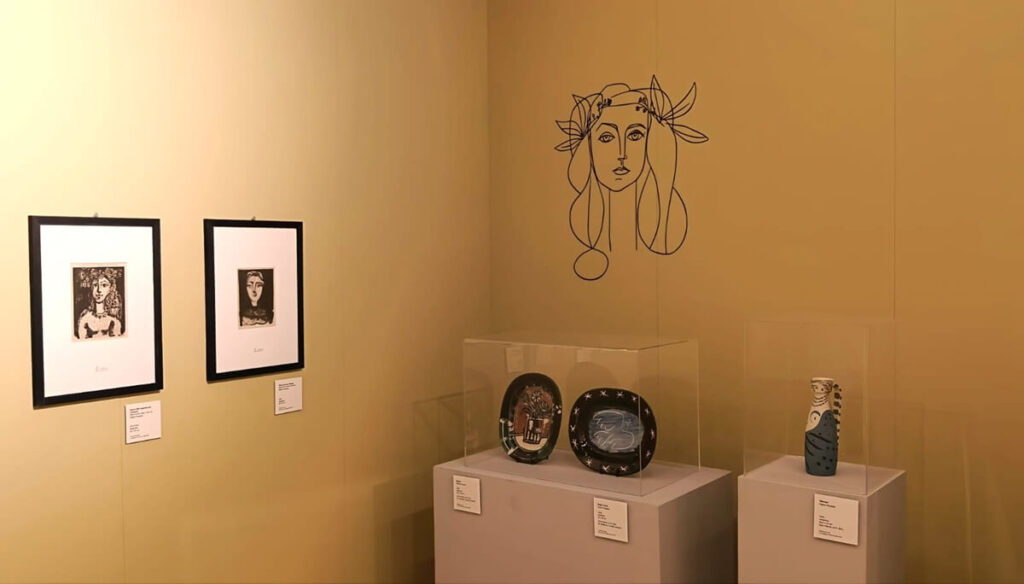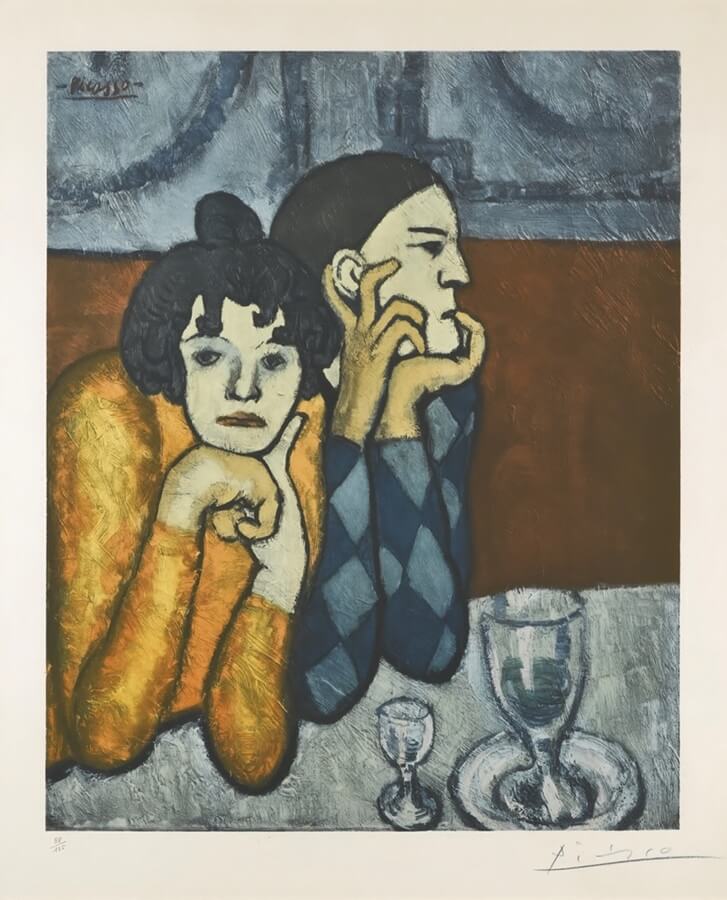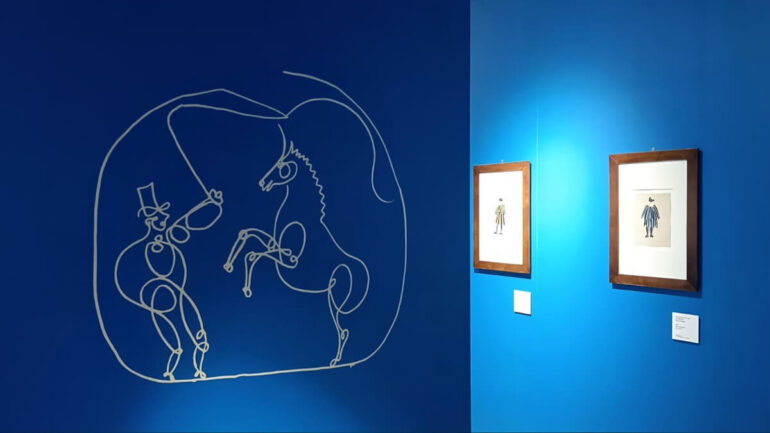In Rome, the Artistic Experiments of the Spanish Genius of 20th-Century Art
At Rome’s Museo Storico della Fanteria, through January 25, 2026, Picasso – The Language of Ideas reveals some of the lesser-known aspects of Pablo Picasso’s life and artistic experimentation (Malaga 1881 – Mougins 1973). Drawings, lithographs, prints, ceramics, and photographs by Picasso and by several artists close to him offer visitors a unique opportunity to understand the personality and creative universe of the Spanish genius.
The Exhibition
The exhibition, Picasso – The Language of Ideas, is organized into six sections and, with over 100 works, presents different stages in the personal life and artistic career of the Spanish painter, printmaker, and sculptor Pablo Picasso. Through a selection of works created by experimenting with different techniques and materials, the show offers insight into his approach to art and the variety of styles and visual languages that characterized his oeuvre, from his youth in Spain to the final period of his life in France.

“This exhibition isn’t the usual display of oil-on-canvas paintings, but a survey of the life, the artist, the ideas, and the artistic experimentations of Pablo Picasso. The Galician, Catalan, and ultimately Spanish artist, after years of painting, wanted to test himself in other modes of expression; and when he began hosting in his home—his studio on rue des Grands-Augustins in Paris—numerous artists, writers, and poets fleeing Spain under the Franco regime, he found inspiration for different forms of artistic expression. Here at the Infantry Museum in Rome, it’s possible to understand the man as well as the artist, and to further ‘read’ the works of Pablo Picasso.
Joan Abelló, curator of the exhibition with Marco Ancora and Carlota Muiños

The six sections of the exhibition itinerary
Picasso, his friends, the women
In the first section, titled Picasso, his friends, the women, you’ll find a selection of works from private and international museum collections, including the oil on canvas Woman Smoking (c. 1906–07), thought to depict his first French companion Fernande Olivier (1881–1966), and Lush Landscape (c. 1930), attributed to his Spanish friend Àngel Fernández de Soto (1882–1937). Also on view are twelve aquatint engravings from the Sable Mouvant (Reproduction after a work) series created in 1966 by Picasso to illustrate a text by poet Pierre Reverdy, the lithograph Deux Femmes Nues III 04.02.1969 (Reproduction after a work), and other Reproduction after graphic works such as Arlequin et sa compagne (Les Deux Saltimbanques), 1901.
Linocuts, a new discovery
The second section, Linocuts, a new discovery, presents a group of works Picasso created between 1958 and 1963 using the linocut technique and its reduction (à forme perdue) variant. On display are twenty color examples from the Suite Linogravures, Reproduction after a work by Pablo Picasso, 1958–61, including, among others, Picador y matador, Picador y toro, Mujer recostada y picador con guitarra, and Madre y niño con bailador y tocador de flauta.

Le Tricorne
The third section, Le Tricorne, is dedicated to the Spanish ballet El sombrero de tres picos, known in French as Le Tricorne. On display are 24 drawings reproducing the costumes created by Picasso, whose colors and decorations evoke Spanish folk art and draw inspiration from the Ballets Russes, following his collaboration with Sergei Diaghilev (1872–1929) on Parade.
Final period: Côte d’Azur, photos, and exhibitions
The fourth section, titled Final period: Côte d’Azur, photos, and exhibitions, features nine posters for Picasso’s exhibitions—some designed by the artist himself using various artistic techniques—and 15 photographs. Taken from 1951 until just days before his death by his photographer friends Edward Quinn (1920–1997) and André Villers (1930–2016), the images recount the Spanish artist’s life in family settings and during his walks and public activities on the French Riviera. These photographs reveal some of the most intimate facets of Picasso’s life and show how his flair, imagination, and curiosity influenced the range of languages, techniques, and styles in his work.

Carnet de la Coruña, 1894-1895
The fifth section, Carnet de La Coruña, 1894–1895, is devoted—thanks to a loan from the Museo Picasso de La Coruña—to a 1971 facsimile edition of a notebook containing 107 drawings Picasso made around the ages of 13–14.
Minor arts and experimentations
The sixth and final section, titled Minor arts and experimentations, presents the original, colorful screen print on linen Scarf, Quatre profils et une Colombe 1951, After a work by Pablo Picasso (1951), dedicated to the World Festival of Youth and Students for Peace, held in Berlin from August 5 to 19, 1951. Also on view are several lithographs from the 1940s, including Françoise, Reproduction after a work by Pablo Picasso (1946) and Jeune fille inspirée par Cranach, Reproduction after a work by Pablo Picasso (26/3/1949). Rounding out the exhibition are eight ceramic pieces produced by Picasso in the 1950s in collaboration with the Madoura studio in Vallauris, on the French Riviera—among them, the plate Bright Dove (1953), the pitcher Femme du Barbu (1953), and the vase Woman (1955). Picasso was the first to grasp the great artistic potential of ceramics, opening the way to designer-led creation and further experimentation by numerous international artists.

Until 25 January 2026
Piazza di Santa Croce in Gerusalemme, 9
Opening Time: Mon – Fri 9.30am – 7.30pm
Sat, Sun: 9.30am – 8.30pm
Tickets: 15€




